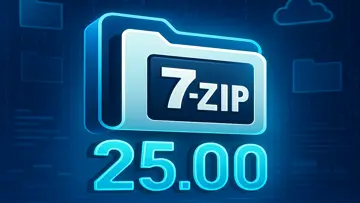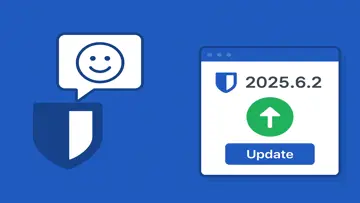1.0.4 Seguro para instalar
WHAT DOES THIS PLUGIN DO THAT OTHER NOISE GATES DON'T?
Most of the iOS recording apps already come with a built-in noise gate effect. So why do you buy another noise gate? There are 2 main reasons: clearer sound and a more natural gate-closing sound.
-
DOWNWARD EXPANSION SOUNDS MORE NATURAL THAN OPEN & SHUT GATING
The simplest noise gate plugins simply set the volume to zero when the input level drops below a threshold. The abrupt change in volume from that process sounds unnatural and makes it obvious that you are using a noise gate plugin on the signal. Instead of using a gate that fluctuates between two states (open, closed), this plugin uses downward expansion to gently and smoothly reduce the gain as the input drops below the threshold setting.
An example to illustrate this:
With the downward expansion ratio set at 2:1 and the threshold at -10 dB, when the signal drops below the -10 dB threshold level, the plugin doubles its distance from the threshold. So a signal that comes in 2 dB below the threshold goes out 4 dB below; 10 dB below the threshold comes out 20 dB below, and so on. The big advantage to this method is that when the signal is just slightly below the threshold, say 1/2 dB for example, it won't be reduced all the way down to zero volume, so you don't hear an abrupt change as the signal drops below the threshold. Instead, it just seems that the quiet sounds are even quieter, and they decay faster than they normally would. This allows you to eliminate a lot of background noise without the listener knowing that you are using a noise gate.
-
SMOOTHER FILTERING IN THE ENVELOPE FOLLOWER MEANS LESS DISTORTION
The key challenge that all noise gate designs struggle to overcome is how to make sure the gate doesn't flutter open and close several times at the end of a sound. This is a serious challenge because the input signal is a wave, meaning that it is constantly moving up and down and it crosses above and below the threshold with every up and down motion. How to keep the gate from opening and closing in time with the oscillation of the sound waves? There are many ways to do it, but the basic idea is to slow the gate down somehow so it can't open and shut too quickly. Of course, slowing the gate down or delaying its closing is not desirable because we need it to close as quickly as possible when the input signal ends and open immediately when it starts up again. Each noise gate plugin handles this problem in a different way, and therefore each one has its own unique sound. To hear how a noise gate performs in this respect, set its release very fast, pluck a low guitar string (or hit a bass note on the piano) and let ring out, listening as the note decays down to the threshold level and the gate starts to activate. If your noise gate allows a fast enough release time, you'll hear a buzzing noise as the gate rapidly flip-flops open and closed for a few moments before settling in the closed position. The audibility of the buzzing sound as the gate closes determines the quality of the plugin. Any gate can avoid buzzing if its release time is set very long, but only the best of them can close down quickly and smoothly without buzzing.
This noise gate plugin has a unique smoothing filter to ensure that the gate makes as little noise as possible when opening and closing while still being able to open and close very quickly.
-
SIDECHAIN HIGH-CUT AND LOW-CUT FILTERS ALLOW YOU TO GATE OUT PART OF THE SIGNAL WHILE KEEPING OTHER PARTS
The side chain input is the signal that the plugin follows to measure the input volume. If you have bass drum bleeding into your hi-hat mic, you can gate out the bass by cutting bass frequencies out of the side chain. The result is that the gate only opens when the hi frequencies from the hi-hat are sounding, not when the bass drum is bleeding through.
Visão geral
Noise Gate & Downward Expander é um software Comercial na categoria Áudio e Multimídia desenvolvido pela Mani Consulting Limited Company.
É a versão mais recente de Noise Gate & Downward Expander 1.0.4, lançado em 23/09/2024. Inicialmente foi adicionado ao nosso banco de dados em 23/09/2024.
Noise Gate & Downward Expander é executado nos seguintes sistemas operacionais: iOS.
Usuários de Noise Gate & Downward Expander deram-lhe uma classificação de 5 de 5 estrelas.
Relacionado
AD 480 basic - Studio Reverb
The AD 480 Basic presents a competent entry point for those interested in professional-grade reverb effects on their iDevices.Audiobus Remote
Audiobus Remote is a companion app for Audiobus that allows you to conveniently access the controls of your Audiobus-compatible music apps on a secondary screen - whether on the same device or on a separate iPhone or iPad connected via …Fair Limiter
Fair Limiter is an AUv3 audio unit plugin that successfully emulates the renowned Fairchild 670, a tube compressor/limiter celebrated for its exceptional audio fidelity and distinct sonic character.iRemote for Smaart 7 & 8
The latest update of Smaart® 7 introduces a feature that allows users to operate the software on either PC or Mac from their iOS devices, facilitating remote access to measurement results directly on their screens.JAX P3 - Pitch Shifter III
This review examines the frequency domain approach employed for pitch shifting, specifically utilizing the phase vocoder method, which fundamentally operates through FFT and inverse FFT processes.Looper Scratch Practice App
The Looper practice application provides users with the capability to seamlessly upload looping WAV files directly from their Dropbox accounts.App Store
com o UpdateStar gratuito.
Últimas revisões
|
|
Telegram Desktop
Mensagens seguras e compartilhamento de arquivos com o Telegram Desktop. |
|
|
EASEUS Partition Master Home Edition
EASEUS Partition Master Home Edition: Software de gerenciamento de partição eficiente |
|
|
UltraViewer
Software de desktop remoto eficiente para colaboração tranquila |
|
|
Software Informer
Mantenha-se informado com o Software Informer |
|
|
UzCrypto
Carteira segura de criptomoedas e aplicativo de gerenciamento de portfólio |
|
|
Quick Access Service
Acesso sem esforço a ferramentas essenciais com o serviço de acesso rápido da Acer Incorporated |
|
|
UpdateStar Premium Edition
Manter seu software atualizado nunca foi tão fácil com o UpdateStar Premium Edition! |
|
|
Microsoft Edge
Um novo padrão na navegação na Web |
|
|
Google Chrome
Navegador da Web rápido e versátil |
|
|
Microsoft Visual C++ 2015 Redistributable Package
Aumente o desempenho do seu sistema com o Microsoft Visual C++ 2015 Redistributable Package! |
|
|
Microsoft Visual C++ 2010 Redistributable
Componente essencial para executar aplicativos do Visual C++ |
|
|
Microsoft Update Health Tools
Ferramentas de integridade do Microsoft Update: Certifique-se de que seu sistema esteja sempre atualizado! |









